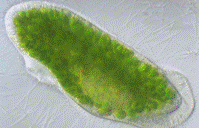Biological Sciences, School of

School of Biological Sciences: Faculty Publications
Reactivation of HIV-1 proviruses in immune-compromised mice engrafted with human VOA-negative CD4+ T cells
© 2017 The Authors. This is an open access article published under the terms of a Creative Commons License.
Abstract
Background: HIV-1 infection remains incurable on antiretroviral therapy (ART) due to virus latency. To date, enhanced co-culture assays, including viral outgrowth assays (VOA), are commonly used to measure HIV-1 latent reservoirs and evaluate latency-reversing agents (LRAs). However, VOA can only reactivate a small fraction of intact proviruses.
Methods: To explore the utility of NOD scid gamma (NSG) mice as an in vivo model to reactivate HIV-1 proviruses from VOA-negative CD4+ T cells, resting CD4+ T cells from an HIV-1 latently infected individual were isolated and the human CD4+ T cells corresponding to VOA-positive and VOA-negative CD4+ T cells were engrafted into NSG mice. Plasma viral load (pVL) and human CD4+ T cells were quantified every other week using qRT-PCR and flow cytometry.
Results: We found that NSG mice reactivated latently infected HIV-1 from VOA-positive CD4+T cells as well as VOA-negative CD4+ T cells. Engrafted CD4+ T cells proliferated considerably in vivo, peaked prior to provirus reactivation, and lasted for up to 14 weeks. Sequence analyses revealed that reactivated proviruses in VOA-positive and VOA-negative CD4+T cells are different.
Conclusion: Taken together, NSG mice can support long-term engraftment of human CD4+ T cells and reactivate VOA-positive and VOA-negative proviruses. Therefore, this in vivo model has the potential to be used to study the underlying mechanisms of HIV-1 latency and reactivation.

